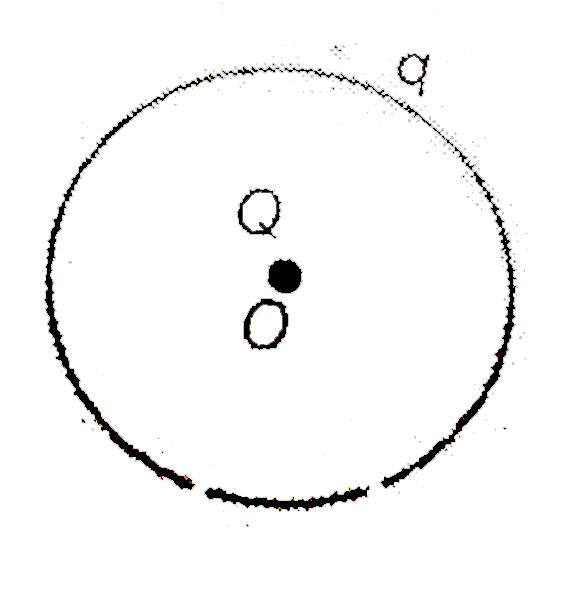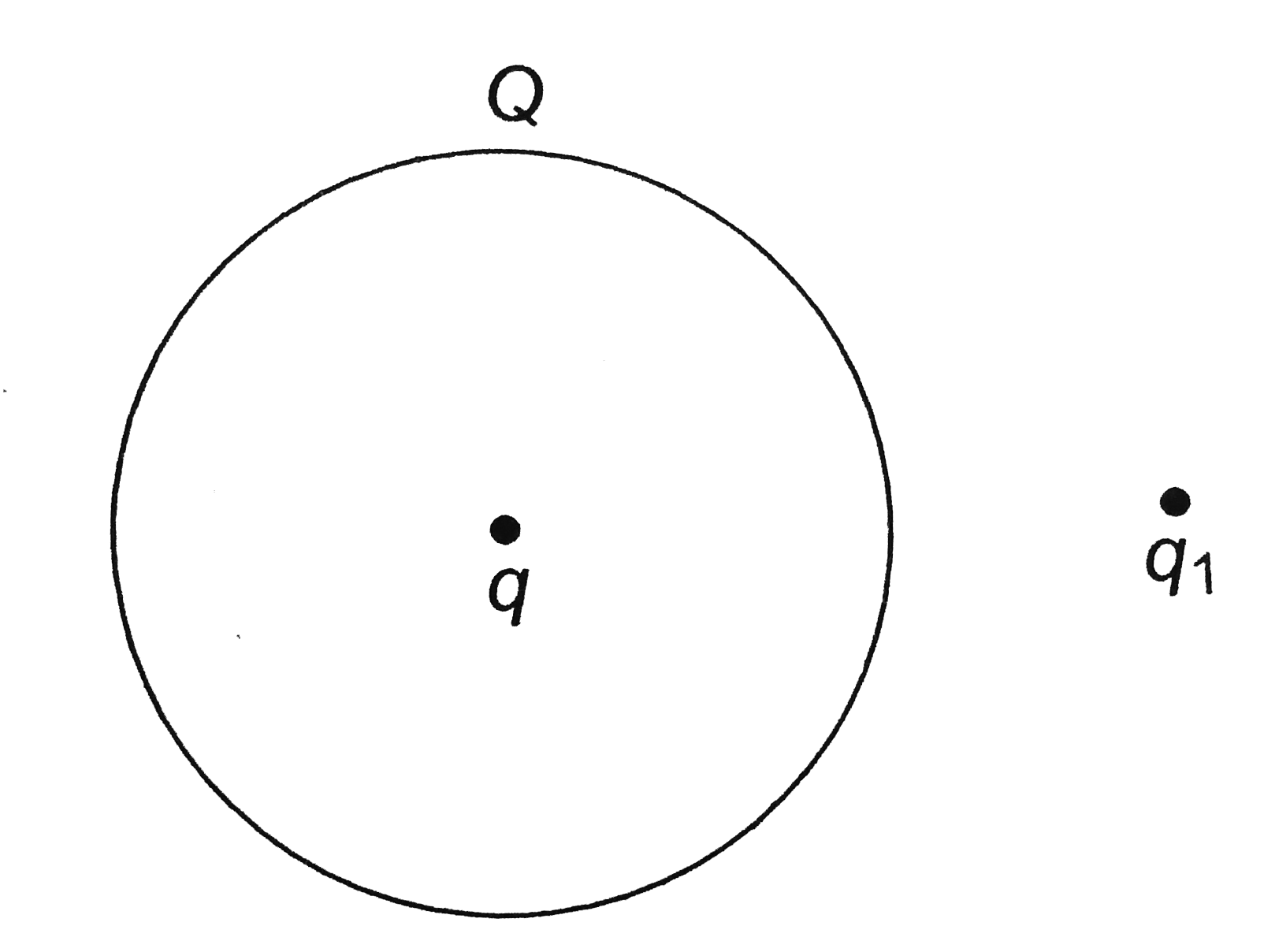A point charge q is placed at the centre of a line joining two equal charges Q. The whole system is in the state of equilibrium. Can you impose some lower limit on the magnitude of the charge Q?
To solve the problem, we need to analyze the equilibrium condition of the three charges: two equal charges Q and a point charge q placed at the center of the line joining them. Here are the steps to derive the lower limit on the magnitude of charge Q:
1. Understanding the Configuration:
- We have two charges, both equal to Q, placed at a distance 2d apart.
- The charge q is placed at the midpoint between the two charges.
2. Identifying Forces:
- The charge q experiences forces due to both charges Q.
- If q is positive, it will be repelled by both Q charges, which cannot lead to equilibrium.
- Therefore, q must be negative for the system to be in equilibrium.
3. Applying Coulomb's Law:
- The force F1 exerted on q by one charge Q is given by:
F1=k⋅|Q|⋅|q|d2
- The force F2 exerted on q by the other charge Q is:
F2=k⋅|Q|⋅|q|(2d)2=k⋅|Q|⋅|q|4d2
4. Setting Up the Equilibrium Condition:
- For q to be in equilibrium, the magnitudes of the forces must be equal:
F1=F2
- Substituting the expressions for F1 and F2:
k⋅|Q|⋅|q|d2=k⋅|Q|⋅|q|4d2
5. Simplifying the Equation:
- Canceling k, |Q|, and |q| from both sides (assuming they are non-zero):
1=14
- This leads to:
|q|=Q4
6. Finding the Lower Limit for Q:
- The smallest possible magnitude for the charge q is the elementary charge e (the charge of an electron), which is approximately 1.6×10−19C.
- Therefore, substituting |q|=e:
|Q|=4|q|=4e
7. Calculating the Value of Q:
- Substituting the value of e:
|Q|=4×1.6×10−19C=6.4×10−19C
Conclusion:
The lower limit on the magnitude of the charge Q is:
|Q|≥6.4×10−19C
- We have two charges, both equal to Q, placed at a distance 2d apart.
- The charge q is placed at the midpoint between the two charges.
- The charge q experiences forces due to both charges Q.
- If q is positive, it will be repelled by both Q charges, which cannot lead to equilibrium.
- Therefore, q must be negative for the system to be in equilibrium.
- The force F1 exerted on q by one charge Q is given by:
F1=k⋅|Q|⋅|q|d2
- The force F2 exerted on q by the other charge Q is:
F2=k⋅|Q|⋅|q|(2d)2=k⋅|Q|⋅|q|4d2
- For q to be in equilibrium, the magnitudes of the forces must be equal:
F1=F2
- Substituting the expressions for F1 and F2:
k⋅|Q|⋅|q|d2=k⋅|Q|⋅|q|4d2
- Canceling k, |Q|, and |q| from both sides (assuming they are non-zero):
1=14
- This leads to:
|q|=Q4
- The smallest possible magnitude for the charge q is the elementary charge e (the charge of an electron), which is approximately 1.6×10−19C.
- Therefore, substituting |q|=e:
|Q|=4|q|=4e
- Substituting the value of e:
|Q|=4×1.6×10−19C=6.4×10−19C
The lower limit on the magnitude of the charge Q is:
|Q|≥6.4×10−19C
Similar Questions
A charge q is placed at the centre of the line joining two equal charges Q. Show that the system of three charges will be in equilibrium if q=−Q4.
View SolutionA charge Q is placed at the centre of the line joining two point charges +q and +q as shown in figure. The ratio of charges Q and q is

View Solution
Knowledge Check
A charge q is placed at the centre of the line joining two equal charges Q. The system of the three charges will be in equilibrium if q is equal to:
A(a) Q2B(b) −Q2C(c) Q4D(d) −Q4A charge q is placed at the centre of the line joining two equal charges Q. The system of the three charges will be in equilibrium , if q is equal to
A−Q2B−Q4C+Q4D+Q2A charge q is placed at the centre of the line joining two equal charges Q. The system of the three charges will be in equilibrium if q is equal to:
A(a) −Q2B(b) −Q4C(c) +Q4D(d) +Q2
A charge q is placed in the middle of a line joining the two equal and like point charge Q .This charge q will remain in equilibrium if q=Qx .What is x?
View SolutionFour identical charges, Q each, are fixed at the vertices of a square. A free charge q is placed at the centre of the square. Investigate the nature of equilibrium of charge q if it is to be displaced slightly along any of the two diagonals of the square.
View SolutionA point charge Q is placed at the centre of a circular wire of radius R having charge q. Find the force of electrostatic interaction between point charge and the wire.

View SolutionA charge q is placed at the centre of the line joining two equal charges Q. The system of the three charges will be in equilibrium if q is equal to:
View SolutionA thin metallic spherical shell contains a charge Q on it. A point charge q is placed at the center of the shell and another charge q1 is placed outside it as shown in figure. All the three charges are positive

The force on the charge at the centre is
View Solution

